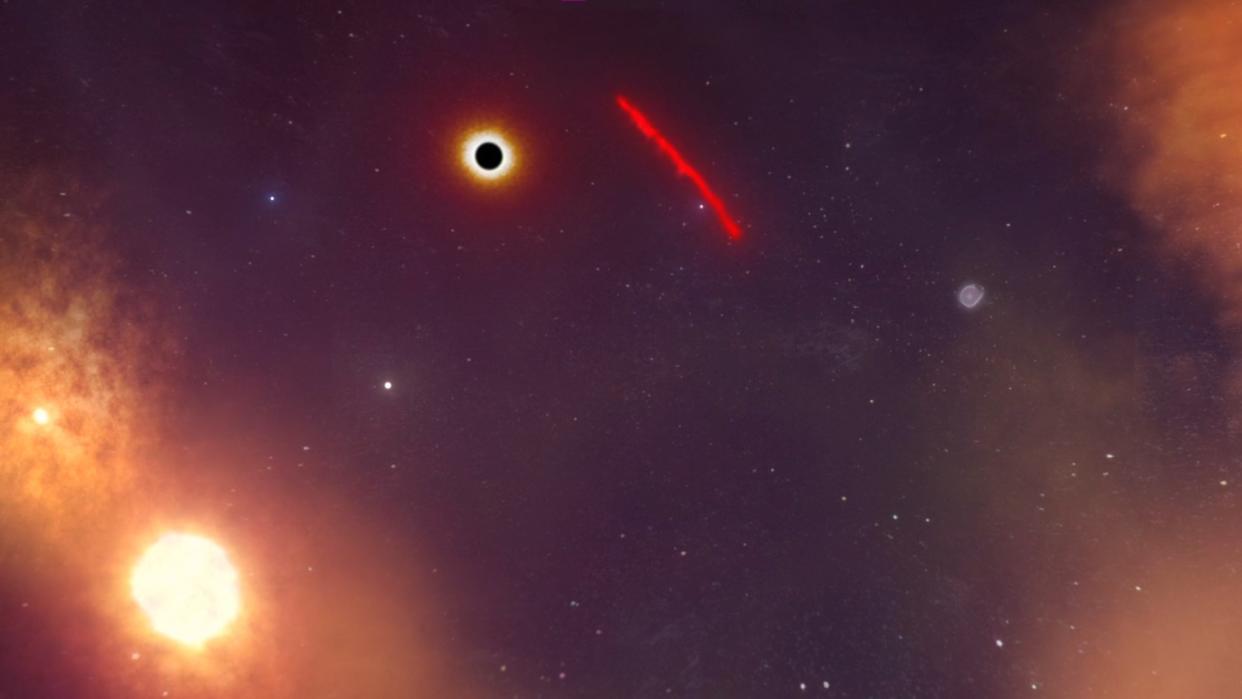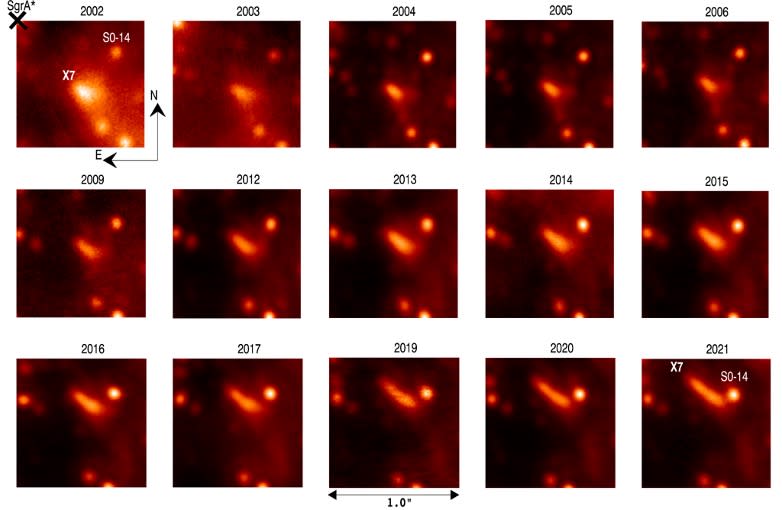The Milky Way's monster black hole is destroying a mysterious dust cloud

The supermassive black hole at the center of our Milky Way galaxy is tearing apart a strange dust cloud, and astronomers are observing the spectacle as it happens.
The dust cloud, called X7 and about as massive as 50 Earths, is orbiting our galaxy's supermassive black hole Sagittarius A*. Over the past 20 years, astronomers have observed the cloud's journey using the W. M. Keck Observatory on Mauna Kea in Hawaiʻi, one of the world's most powerful telescopes.
The observations have revealed that the filament has gradually stretched as it has wrapped itself around the black hole and is now as long as 3,000 sun-Earth distances.
The observation campaign that began in 2002 provides new insights into the processes governed by powerful gravitational forces exerted by Sagittarius A* on its surroundings.
Related: Sagittarius A* in pictures: The 1st photo of the Milky Way's monster black hole explained in images

"This is a unique chance at observing the effects of the black hole's tidal forces at high-resolution, giving us insight into the physics of the galactic center's extreme environment," Anna Ciurlo, assistant researcher at the University of California, Los Angeles, and lead author of the study, said in a statement.
The astronomers observed X7 using the NIRC2 instrument on Keck that reveals the universe in the heat-emitting near-infrared light, the same wavelength that NASA's James Webb Space Telescope specializes in. Thanks to infrared light's ability to penetrate through dust, the astronomers were able to observe the filament's motions in great detail. They found that the filament currently takes about 170 years to orbit around the galactic center, and calculated that in 2036, the filament will make its closest approach to the black hole. Shortly after that, the cloud will completely dissipate.
"It's exciting to see significant changes of X7's shape and dynamics in such great detail over a relatively short time scale as the gravitational forces of the supermassive black hole at the center of the Milky Way influences this object," Randy Campbell, science operations lead at Keck Observatory and co-author of the study, said in the statement.

After the filament's demise, its material will be swallowed up by the black hole. The process, according to the scientists, may produce some "fireworks" as the dust accelerates and heats up before crossing the event horizon.
RELATED STORIES:
— Colliding black holes 'ring' across space-time with gravitational wave ripples
— Black holes may be the source of mysterious dark energy
— Star survives spaghettification by black hole
While the researchers have predicted the filament's future with quite a high level of reliability, they know much less about its past. They think the cloud may have formed when two stars merged and ejected a shell of dust and gas that emerged around them in the process.
"One possibility is that X7's gas and dust were ejected at the moment when two stars merged," Ciurlo said. "In this process, the merged star is hidden inside a shell of dust and gas and the ejected gas perhaps produced X7-like objects."
X7 is one of a multitude of filaments that exist in the Milky Way's galactic center. These filaments, called the G objects, orbit extremely fast around the vicinity of the black hole, at speeds of up to 490 miles per second (790 kilometers per second). Insights gathered from X7 may therefore help astronomers predict the lives of its counterparts.
Since X7 still has more than a decade of life ahead of it, astronomers will continue monitoring its journey as it spirals to its ultimate death.
The study was published on Wednesday (Feb. 22) in the Astrophysical Journal.
Follow Tereza Pultarova on Twitter @TerezaPultarova. Follow us on Twitter @Spacedotcom and on Facebook.

